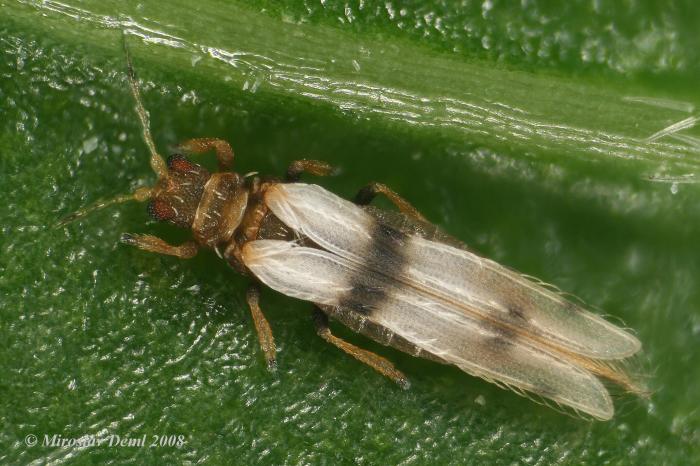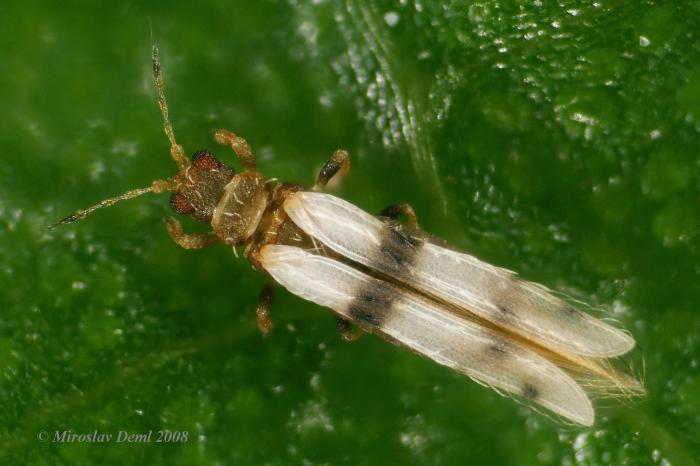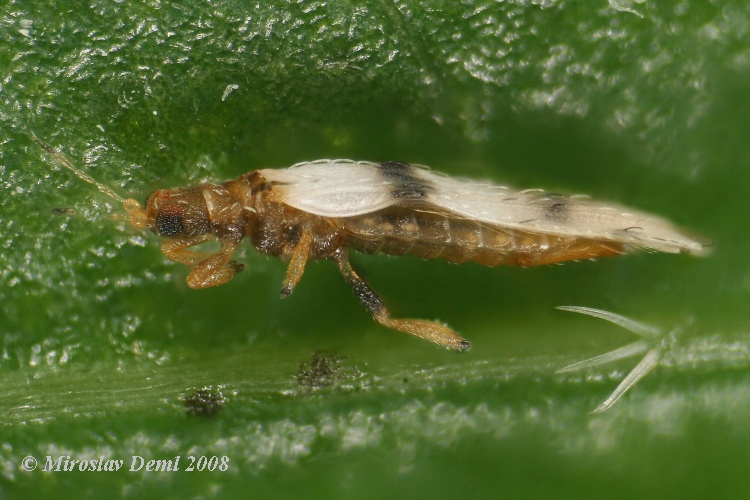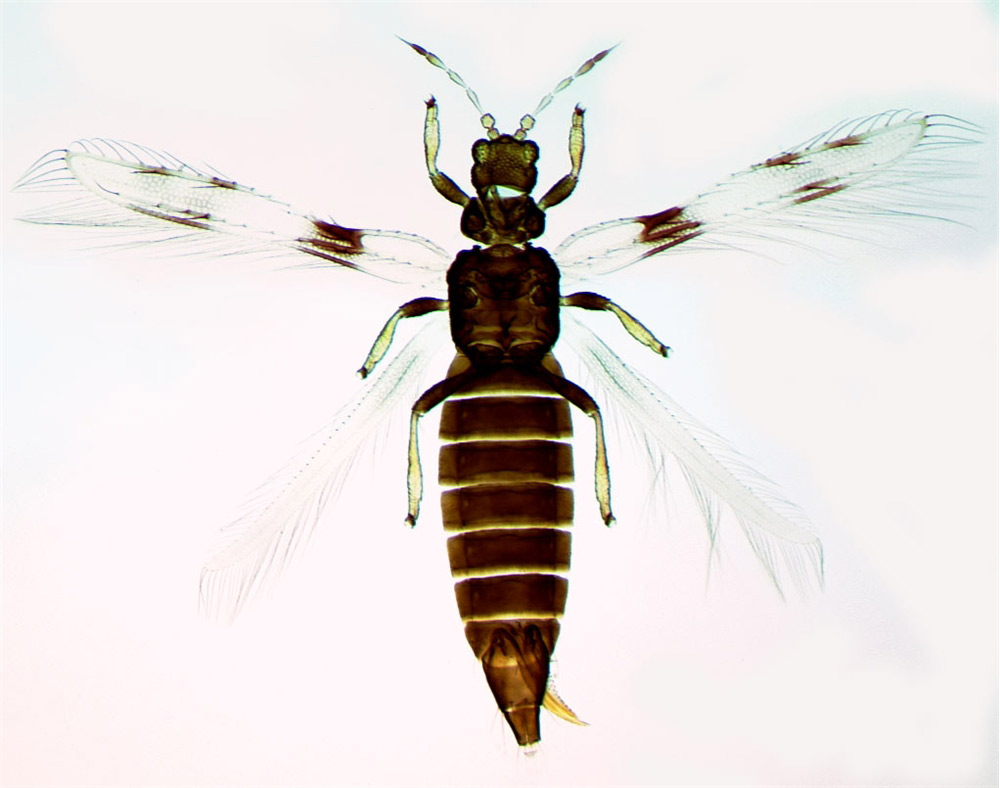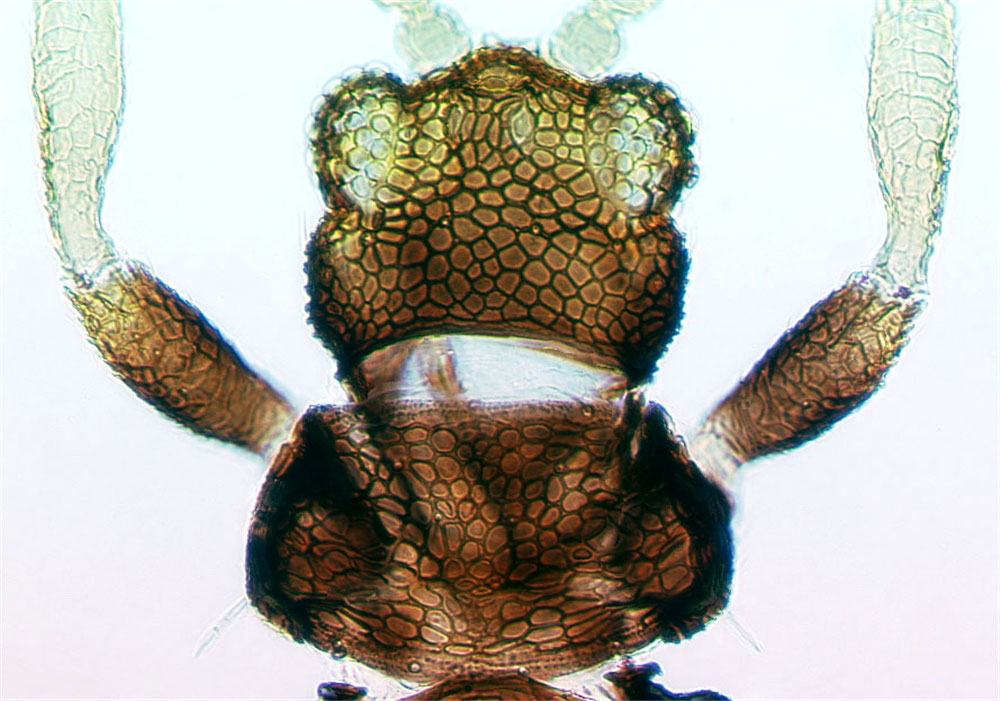Parlour Palm Thrips
|
adult female; Photo © Miroslav Deml, www.biolib.cz/en/ |
|
adult female; Photo © Miroslav Deml, www.biolib.cz/en/ |
|
adult female, lateral view; Photo © Miroslav Deml, www.biolib.cz/en/ |
|
adult female (slide-mounted specimen); Photo courtesy of Hoddle, Mound, and Paris, 2008, Thrips of California |
|
head and pronotum; Photo courtesy of Hoddle, Mound, and Paris, 2008, Thrips of California |
|
forewing; Photo courtesy of Hoddle, Mound, and Paris, 2008, Thrips of California |
Scientific name
Parthenothrips dracaenae (Heeger)
Family
Thripidae (subfamily Panchaetothripinae)
Synonyms
Heliothrips dracaenae Heeger, Parthenothrips concolor Uzel
Description
Adult (female): Body golden brown with heavy reticulatereticulate:
net-like
sculpture; antennae with 7 segements; forewings exceptionally broad, more than half as long as abdomen; head strongly reticulatereticulate:
net-like
; tarsitarsi:
the portion of insect legs distal to the tibia (singular tarsus)
and tibiae yellow; pronotumpronotum:
the dorsal surface of the first thoracic segment
reticulate, with 1 pair of flattened posterior angular setae.
Diagnostic features
Body golden brown with heavy reticulatereticulate:
net-like
sculpture. Forewings broad with reticulatereticulate:
net-like
sculpture and dark banding. Head wider than long.
Distribution
Possibly native to Australia. Now widespread throughout the tropics and subtropics, as well as in greenhouses in temperate areas.
Hosts
Palms: a diversity of palms
Other: a wide range of plants, many with hard leaves.
Additional comments
Not known to be a vector of diseases.
Damage can be detected by leaves being silvered, browned, and scarred.
Parlour palm thrips is the first species of thrips found to be capable of parthenogenetic reproduction. Populations are mainly composed of females.
Definitive species identification requires at least a dissecting microscope with 40x magnification. Often, slide mounted specimens are required for verification.
Also commonly referred to as palm thrips.


